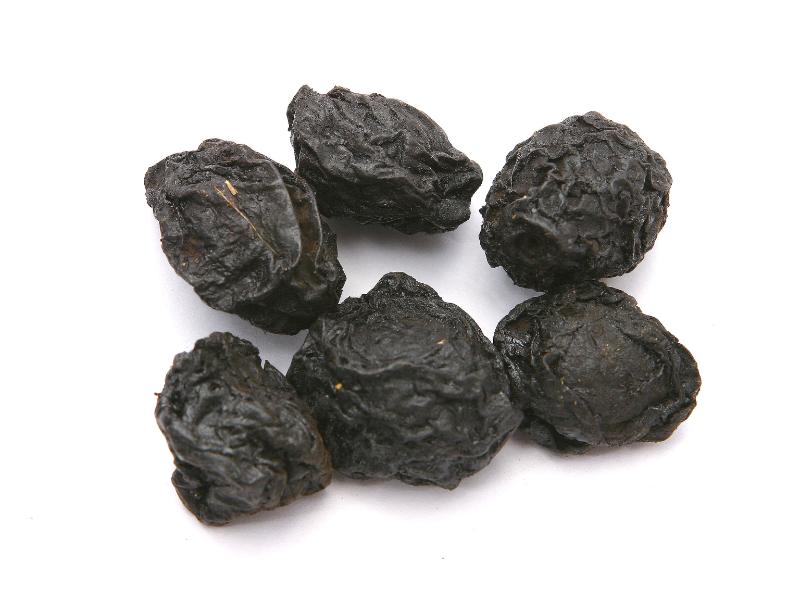Search in medicinals
Mume Fructus
Mume [fruit]
乌梅 〔烏梅〕 wū méi

Alternate English names: Japanese apricot [fruit]
Alternate Chinese names: 梅实 méi shí; 熏梅 xūn méi; 枯梅肉 kū méi ròu; 乌梅肉 wū méi ròu
Kingdom: Plant
Origin in PRC Pharmacopoeia: Prunus mume (Sieb.) Sieb. et Zucc. (PRC Pharmacopoeia)
Origin in unofficial sources: Prunus mume (Sieb.) Sieb. et Zucc.*
Use: Medicinal and alimentary
Category: Exterior-resolving agents
Properties: Sour, astringent; balanced.
Channel entry: Liver, lung, spleen, and large intestine channels.
Actions and indications:
- Constrains the lung and relieves cough: Enduring cough due to lung vacuity.
- Astringes the intestines and checks diarrhea: Enduring diarrhea; enduring dysentery.
- Quiets roundworm and relieves pain: Vomiting and abdominal pain in roundworm reversal.
- Engenders liquid and relieves thirst: dispersion-thirst with vacuity heat.
- Additional actions: Wū méi has toxin-resolving and phlegm-transforming actions. Thus, it may also be used for malarial disease,
vomiting and retching , and stomach reflux (a disease characterized byvomiting in the morning of food eaten in the evening , or vomiting in the evening of food eaten in the morning). It may be applied topically tosore s to disperse toxin or to treat excrescences of the flesh. It can also and can be charred to stanch bleeding.
Dosage and method: Oral: 3–9 g in decoctions; large formulas may use up to 30g. For external use, decoct it as a wash or grind it to a powder.
Warnings: Contraindicated in exterior conditions and internal repletion heat
Product description: The dried, shrunken fruit is oblate or irregular in shape, with a diameter of 1.5–3 cm. The exterior surface is dark brown or black and highly wrinkled. The flesh is soft and pliable. Within is a hard, light brown pit.
Quality: Best are large, thick, unbroken flesh fruits with black skin, small pits, and a strong sour taste.
Production area: Húnán, Sìchuān, Zhèjiāng, Fújiàn, Húnán, and Guìzhōu.
Etymology: The term wū méi 乌梅, black plum
because of the black coloring when dried. The plum
is actually the mume or Japanese apricot, the English term mume apparently deriving from Japanese ume (梅).